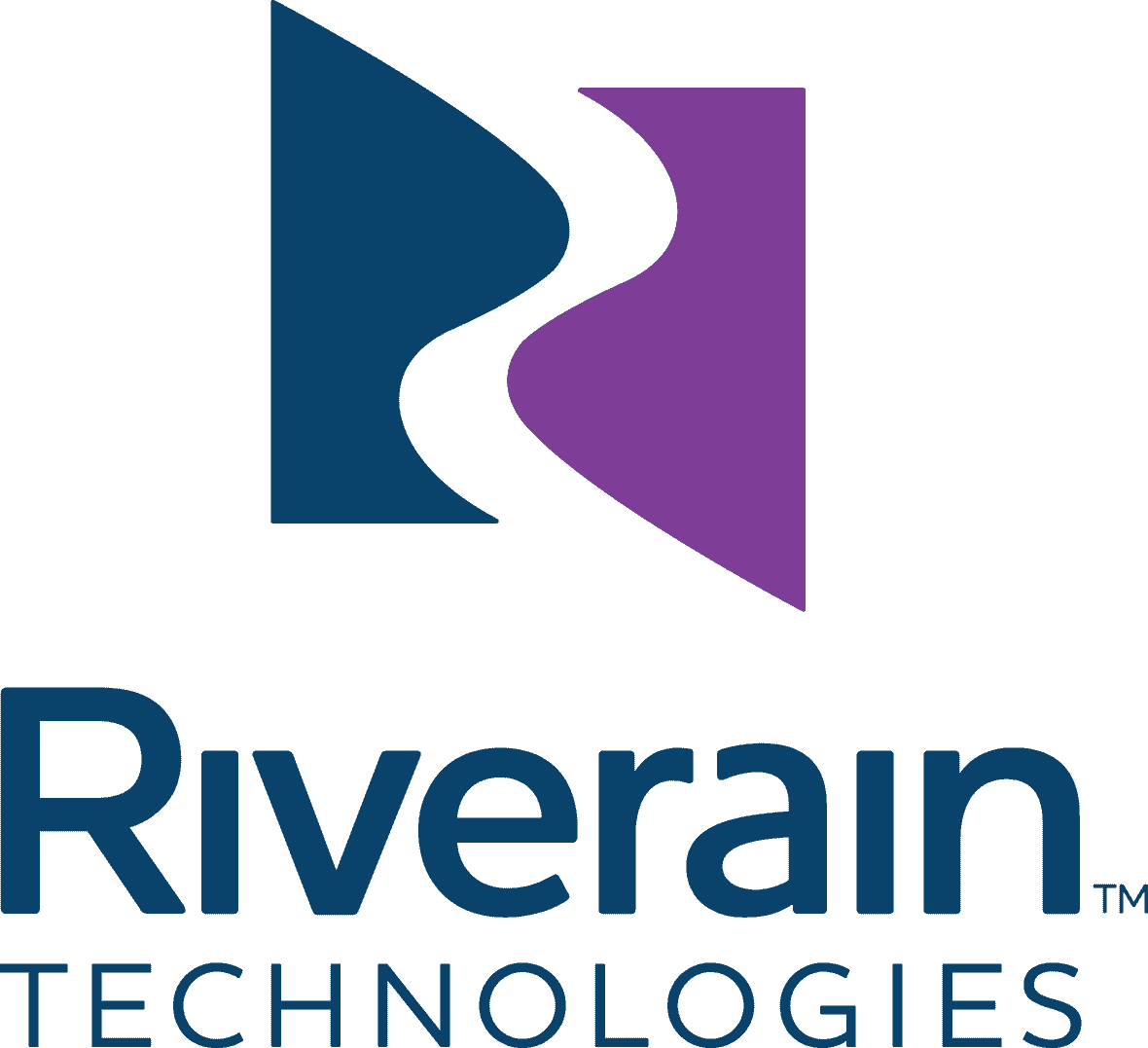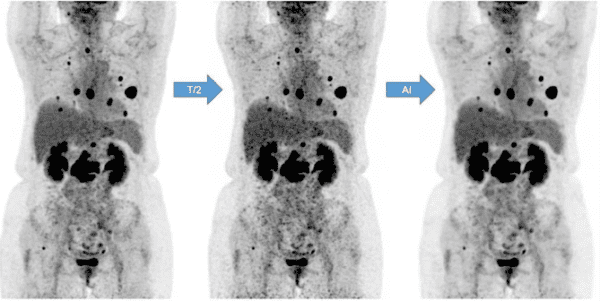|
SubtlePET Validations | Imaging’s Portability Problem
May 30, 2022
|
|
|

|
|
Together with
|

|
|
|
“How did we get stuck in this difficult place, where institutions such as the Mayo Clinic and MD Anderson still import imaging studies from many hundreds of CDs every day?”
|
|
UCSF’s David Avrin, MD, PhD exploring radiology’s failure to live up to HIPAA’s portability expectations.
|
|

|
|
Two new studies out of France added to the growing field of evidence supporting Subtle Medical’s SubtlePET solution, with each confirming that it allows shorter-duration PET exams without affecting image quality.
The first study, published in EJNMMI Physics, proclaimed SubtlePET “ready to be used in clinical practice for half-time or half-dose acquisitions” after it restored 18F-FDG PET/CT exams from three different scanners without impacting diagnostic confidence.
The researchers performed 18F-FDG PET/CT exams on 110 patients, producing full-acquisition, 50%-reduced, and 66%-reduced images (PET100, PET50, and PET33). They then denoised the images with SubtlePET and had two senior nuclear physicians evaluate them, finding that SubtlePET improved:
- PET33 image quality from 16.7% to 86.7% “interpretable” & 0% to 26.7% “good”
- PET50 image quality from 83.6% to 100% “interpretable” & 1.8% to 84.5% “good”
- High-BMI patients’ PET100 exams from 60% to 80% “good” image quality (both were 100% interpretable)
The second study out of France’s Baclesse Cancer Center further confirmed that SubtlePET preserves 18F-FDG PET image quality with half-duration exams.
The researchers performed 90-second and 45-second 18F-FDG PET/CT exams on 195 patients (PET90 & PET45), and then used SubtlePET to denoise the 45-second images, finding that:
- PET45 exams produced mediocre image quality (8% poor, 68% moderate) and achieved an 88.7% lesion concordance rate with PET90
- After SubtlePET enhancement, PET45’s image quality matched PET90 (both 92% good, 8% moderate) and achieved a 97.7% lesion concordance rate with PET90
- 7 of the discordant lesions (0.8%) were only detected with PET90 and 13 (1.5%) were exclusively detected with SubtlePET-enhanced PET45 images
The Takeaway
May was a particularly big research month, but SubtlePET has been on an academic hot streak for over a year, including at least three previous studies validating its performance with lower radiotracer dosage and faster acquisition times.
Subtle Medical’s marketing currently appears to focus on SubtlePET’s support for shorter scans, but it’s easy to see how patients and clinicians would welcome both shorter scans and lower radiotracer dosage, and the research increasingly seems to validate both use cases.
|




|
|
Lunit’s Case for CARPL.ai
After setting ambitious regulatory and commercialization goals, Lunit leveraged CARPL.ai’s platform and operational guidance to complete the clinical trials needed for its INSIGHT CXR and MMG AI tools’ FDA clearances.
|
|
- The “P” in HIPAA Stands for Portability: An editorial by UCSF’s David Avrin, MD criticized radiology’s failure to live up to HIPAA’s portability expectations, despite its head-start with the DICOM standard. Dr. Avrin attributed image exchanges’ portability shortcoming to: 1) security and privacy concerns; 2) the US’ lack of universal healthcare IDs; 3) insufficient regulatory leadership allowing the development of siloed solutions; and 4) providers’ lack of commercial incentives to share patient info. That list is more balanced than the last image portability critique we covered, which directly blamed the exchange companies.
- Autonomous AI Evidence: Oxipit now has evidence to help address concerns about its ChestLink autonomous AI solution. Researchers used ChestLink to analyze nearly 10k chest X-rays, finding that it could have safely removed 36.4% of healthy scans from radiologist workflows (17.7% of all scans). While ChestLink incorrectly labeled 9 abnormal CXRs as negative, none had critical findings. This preprint study’s 99.8% sensitivity and 36.4% specificity seem like positive signs for ChestLink, even though most radiologists will require much more evidence before they accept autonomous AI in their workflows.
- 68GA-FAPI for Biliary Tract Cancers: A new China-based study showed that 68GA-FAPI PET/CT could provide more accurate tumor staging for biliary tract cancers compared to 18F-FDG PET/CT. Researchers examined 18 patients with primary or recurrent biliary tract tumors, finding 68Ga-FAPI PET/CT to be more sensitive than FDG PET/CT for identifying primary tumors (100% vs 81%), nodal metastases (98% vs 83%), and distant metastases (100% vs 79%). As a result, 68Ga-FAPI PET/CT produced new oncologic findings in 10 patients and upgraded tumor staging or restaging in five patients.
- Within Health & Olive: Within Health announced the addition of its RadNav radiology patient follow-up management solution to the Olive Library, making it available to Olive’s hospital customer base (including 30% of the largest US hospitals). There’s been plenty of radiology platform partnerships over the last few years, but this is the first one we’ve seen with Olive. That said, department-agnostic platforms might represent an interesting avenue as hospitals’ digital health infrastructures evolve, especially for solutions that extend beyond the radiology department (like RadNAV).
- UltraSight’s AI Guidance Evidence: An UltraSight and Sheba Medical Center pilot study demonstrated that UltraSight’s echo guidance AI software allows novice users to capture sonographer-level cardiac ultrasound images. After attending an 8-hour course, three medical assistants with no prior sonography training used UltraSight to perform echo exams on 61 patients, obtaining diagnostic-quality images with 100% of patients.
- Outpatient Catch-22: Turquoise Health highlighted the catch-22 imaging centers will face when CMS’ cost transparency rules expand to outpatient facilities in July. Hospitals and payors will soon be required to publish their rates with independent facilities (e.g. imaging centers, ASCs, labs), potentially increasing competitive pressures when listed side-by-side with other facilities. To avoid a race to the bottom, Turquoise encouraged outpatient groups to publish their rates alongside information about their differentiators (e.g. advanced technology, patient experience).
- NSA’s Big Impact: The No Surprises Act prevented over 2M surprise medical bills during its first two months and is on track to prevent over 12M surprise claims in 2022. That’s from an AHIP and Blue Cross Blue Shield survey of 31 private payors (who cover 54% of commercial enrollees), revealing that 0.23% of their claims in January and February were NSA-eligible. Even if the surprise billing fight remains unfinished, this study suggests that the law is already having a major impact.
- Long COVID’s Form & Function: A team of UK-based researchers demonstrated that even mild cases of long COVID can persistently reduce the lung’s ability to transfer inhaled air to red blood cells. The researchers used Xenon gas-enhanced MRI to investigate the lungs of 36 participants (11 non-hospitalized, 12 hospitalized, and 13 healthy volunteers). Despite having normal CT scans, the non-hospitalized long haulers had lower gas transfer scores compared to the post-hospitalized group (76% vs. 86%) and similar Red Blood Cell:Tissue Plasma levels (0.37 & 0.31).
- Solving Canada’s Radiology Problem: The Canadian Association of Radiologists (CAR) continued its lobbying efforts, releasing new data on Canada’s poor imaging infrastructure and recommendations on how to fix it. According to the CAR, 35% of Canada’s imaging equipment is over 10 years old and the country’s CT and MRI wait times are both over 80 days. To address these issues, the CAR called for: 1) $1.5B in federal imaging funding; 2) implementing a national e-referrals program; and 3) creating a National Data Science Institute focused on AI development and adoption.
- GPs’ POCUS Discrepancies: Point-of-care ultrasound (POCUS) might be gaining traction among general practitioners, but a recent survey revealed notable discrepancies between Danish GPs’ opinions about POCUS use and their clinical practices. The majority of GPs (n=24) believe they should receive formal training before using POCUS, their POCUS exams should be performed with a clear purpose, and be limited to specific conditions and anatomic areas. However, when researchers analyzed the GP’s POCUS use (n=20), they found that the GPs performed both focused and exploratory ultrasounds, sometimes without training.
- Data Sharing Survey: More evidence continues to come out indicating that Americans are willing to share health data, but only for certain use cases. A Q-Centrix survey of 1.2k US adults found that 71% are open to sharing de-identified health data to improve their own healthcare or to advance health equity, however most are either very concerned or somewhat concerned (42% & 45%) about how that data is shared. Despite these hesitations, only one-in-five believe that sharing health data is not important when done responsibly.
|
|
Microservice Architecture’s Many Benefits
See how cloud-native imaging avoids traditional software’s resource utilization constraints and eliminates unexpected disruptions in this Change Healthcare animation.
|
|
- “When will I be back?” is athletes’ first question following a sports-related injury, and New York’s Hospital for Special Surgery increasingly relies on GE Healthcare MR technology for its answers. See how HSS is leveraging GE’s MR scanners, coils, and solutions to achieve more accurate assessments and better patient experiences.
- To solve the challenges of enterprise imaging, you’ll need a strategy that addresses today’s needs and future challenges. Answer the questions to see if you’re prepared to formulate a more effective healthcare IT plan.
- Faced with two aging legacy PACS systems, South Jersey Radiology Associates moved to Intelerad’s IntelePACS, allowing its 12 sites to operate as a single, more-efficient entity. See how SJRA has since improved its radiologist efficiency by 8% to 10% and achieved a unified experience across its locations.
- Check out this talk from Eliot Siegel, MD on the “Hype, Myth, Reality and Next Steps” of imaging AI, including a profile on Canon’s AiCE Deep Learning Reconstruction solution at around the 4-minute mark.
- Working on improving your radiology department’s performance? This Novarad post details the many aspects that contribute to a radiology department’s performance, and how Novarad can help.
- Do your radiologists want faster and less manual access to imaging studies? See how the Indiana Health Information Exchange (IHIE), the largest inter-organizational clinical data repository in the US, cut its imaging study retrieval time by 94% when it adopted Nuance PowerShare.
- Think your imaging center patients and staff might be open to a better check-in process? See how Radiology Associates of Daytona (RA) streamlined patient check-ins with Fujifilm’s Synapse RIS-integrated Royal Kiosks.
|
|
|
|
|